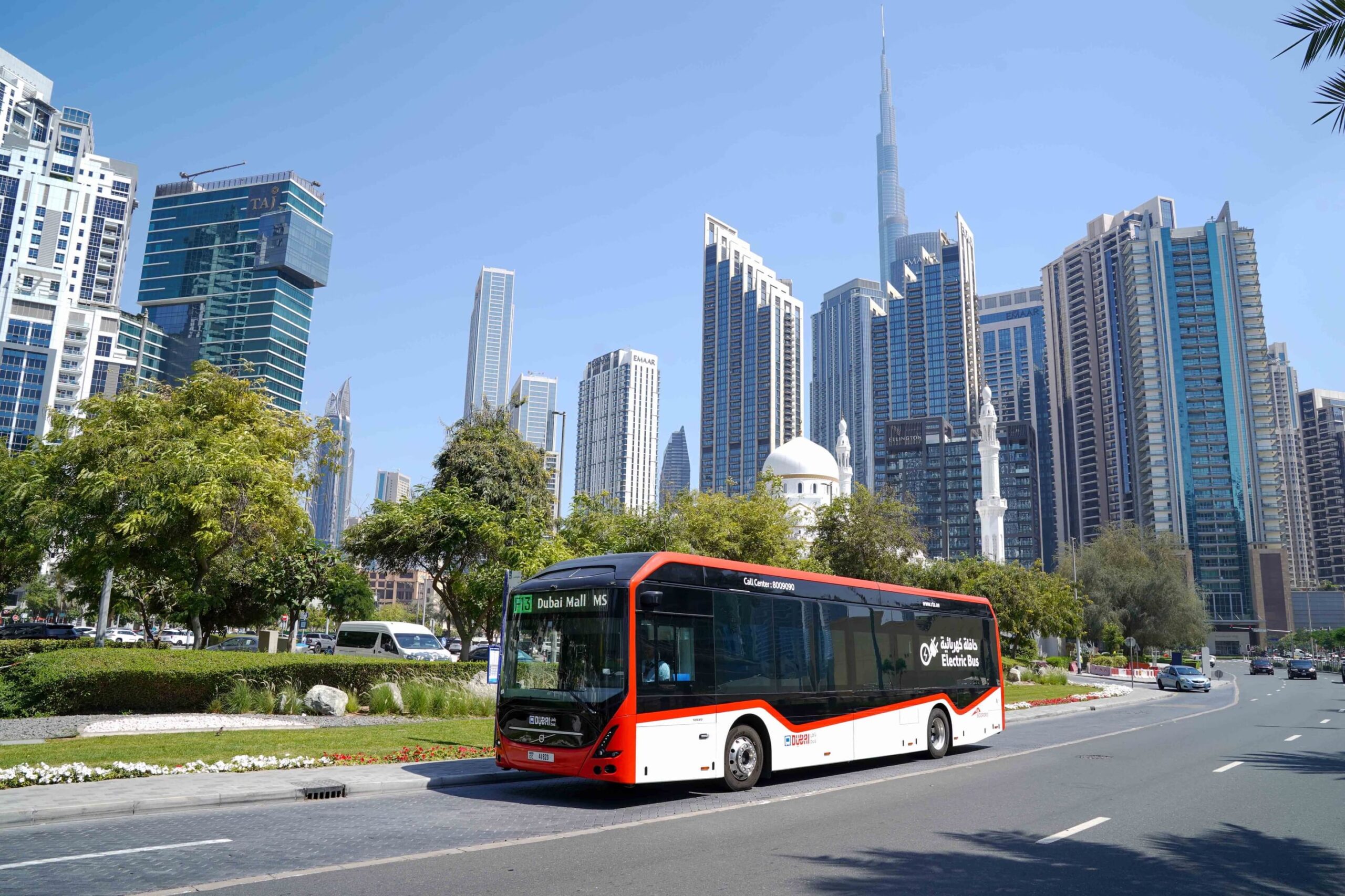Dubai’s Roads and Transport Authority (RTA) has commenced a pilot operation of a new electric bus on Route F13, a metro feeder line aimed at supporting sustainable urban mobility. The initiative is part of the authority’s broader strategy to transition all public transport in Dubai to zero-emission vehicles by 2050.
The electric bus will operate from Al Quoz Bus Depot, stopping at major landmarks including Burj Khalifa, The Palace Downtown Hotel, and Dubai Fountain, before reaching its final destination at the Dubai Mall Metro Bus Stop (South).
Outfitted with advanced features, the electric bus replaces traditional mirrors with high-definition cameras and screen systems and integrates a transparent head-up display that projects key driving information onto the windshield. These smart systems aim to enhance driver awareness and safety.
Designed specifically for Dubai’s environmental conditions, the 12-metre-long bus can accommodate up to 76 passengers—41 seated and 35 standing. It boasts a class-leading air conditioning system and a powerful 470 kWh battery, the largest tested to date in the RTA’s electric fleet. A full charge enables the bus to travel up to 370 kilometers.
Marwan Al Zarooni, Director of Buses at RTA’s Public Transport Agency, said, “The technologies integrated into the new electric bus, manufactured by Volvo, will enable RTA teams to collect data that supports the adoption of new concepts and specifications for future buses—enhancing both performance and safety throughout the journey.”
He added that the trial would provide valuable insights into the bus’s environmental performance, especially in high-demand scenarios and Dubai’s challenging summer climate. “Through this trial, RTA will monitor the environmental benefits of operating the electric bus within the Public Transport Agency’s fleet on a high-demand route with actual passengers.”
The data collected will be used to evaluate reductions in carbon emissions, real-world range performance, and the vehicle’s ability to meet operational needs in varying weather conditions.






